Earlier this week, Chris Raschka’s A Ball for Daisy won the 2012 Caldecott Medal, the very prestigious annual award for the most distinguished American picture book for children.
Earlier this evening, I was flipping through Chris Raschka’s A Ball for Daisy as my daughter brushed her teeth and worrying that she wasn’t going to like it.
Why was I worried? Because, recently, my daughter, who turned five in November, has started to gravitate towards older and older skewing reading material. She still loves picture books and even has a few board books that she refuses to pack away with the rest of her toddler toys, but, lately, she’s shown increasing interest in early readers and chapter books. We’d just spent the past two days reading her the 128-page Lulu and the Brontosaurus by Judith Viorst and Lane Smith, and she’d loved it. It was a huge hit. (It’s both a beautiful and a hysterically funny chapter book. I definitely recommend it.) My wife and I began thinking, “OK, this is where we’re headed. More Mercy Watson, less Eric Carle.”
So, as I flipped through A Ball for Daisy, a wordless picture book with big, expressive illustrations that even the youngest of readers could appreciate, all I could think was “She might be too old for this.”
BUT, as frequent readers of this blog will recognize, there is one seemingly constant and unchangeable rule of parenting that I never seem to be able to escape. What’s that rule? The fact that – when I make a parental decision or even when I speak a particularly declarative sentence – I am almost always, always WRONG.
My five year old didn’t just LIKE A Ball of Daisy. She adored it. This little 32-page book, with no words at all, brought out so many emotions from her in a short bedtime reading that I could barely believe it. And, once I finished reading, she was more animated and chatty about what she’d just read than I’d seen her be in a long time. It was one of the best bedtime reads we’d had in weeks and it all came from a book that five minutes earlier that I assumed she wouldn’t like. (My great apologies, Caldecott committee. I shouldn’t have doubted you.)
I think the reason that A Ball for Daisy worked so well for my daughter – and why it probably works so well for other children too – is that it very skillfully takes its reader on an emotional journey. The simple, yet achingly deep story is all about a cute dog named Daisy who LOVES her big red ball. How do we know she loves it? Because, in Raschka’s expressive drawings, you can see Daisy’s face light up and almost hear her tail wag whenever she’s near the ball. The kicker is the beautiful moment when Daisy, while trying to fall asleep, decides to cuddle up to her red ball on the couch. (Trust me. Cuddles go over HUGE with kids. My daughter let out an audible “Aww” at that part.)
Daisy’s owner takes Daisy and her ball on a walk to the park, and Daisy meets a new brown dog, who excitedly jumps in to play with Daisy’s ball. And then the unthinkable happens – the ball pops. It explodes in a little red burst and, suddenly, it’s gone. All that’s left is some red plastic, deflated and broken on the ground.
This is when the emotional journey of A Ball for Daisy really kicks in and we start to realize that the book is actually about dealing with loss. Which is a pretty deep and complex concept for a picture book about a dog and a ball to tackle, but Raschka does a fantastic job of letting his deceptively simple imagery really connect and hit home with his readers. His illustrations are perhaps the most efficient “emotion delivery systems” I’ve ever seen. Daisy’s facial expressions and body language are heartbreaking in the moments after the ball bursts, especially after she realizes that the ball can’t be fixed and isn’t coming back.
After Daisy walks home with her head hung low, I looked back at my daughter and wondered briefly if she was going to cry. Her furrowed face was FILLED with emotion and she looked genuinely upset. I asked her if she was OK, and she asked if the ball could be fixed. When I told her “no”, she got even more agitated until I said, “Just wait. Things work out for Daisy.”
Following Daisy’s long trudge home, Raschka gives the dog a wonderful two-page spread where she’s allowed to just curl up on the couch and be sad about her loss. And I love that Raschka included this story beat in the book because anyone familiar with loss with recognize the stage of grieving where you just need to curl up somewhere comfortable and wait out your pain. (The spread does have a beautiful beat where Daisy’s owner cuddles up and commiserates with her dog – another great and true moment.)
Following that spread, Daisy and her owner head back to the park, where they meet the brown dog again. But this time, the owner of the brown dog – a girl around the same age as Daisy’s owner – has brought Daisy a gift – a NEW ball. (My daughter, on the verge of tears a few pages ago, again, let out an audible “whoop” of approval.) Daisy quickly learns to love again and we also get the impression that both Daisy and her owner have made new friends.
Once A Ball for Daisy was finished, my daughter quickly asked, “Can we keep this book?” I reminded her that it was a library book. “Oh yeah,” she said, “But we get to keep it for three weeks and maybe we can buy it one day?” I told her “of course” and she quickly started recounting all of the story’s big emotional beats. “That dog loved that red ball… it was so cute when they cuddled… I was so MAD at that brown dog… that ball was her favorite and she had to throw it in the trash…” She wasn’t really retelling the plot elements. She was more retelling how the story made her feel.
Then my daughter chimed in with, “I’m glad there were no words. Because you could tell what was happening and how they felt, but we can put in our own words and make it sound the way we want it to. Like instead of ‘pop’, you could say the ball ‘burst’ next time.”
That knocked me on my rear. Minutes earlier, I was worried that the lack of words would be seen as a negative for a big, bad five year old and here was my daughter telling me that the lack of words was one of her favorite parts. Once again, dear readers – I am WRONG so very, very often.
And I’m glad that I was so wrong about A Ball for Daisy. I’d had a bit of a grudge against the book since it won the Caldecott over two books we really loved (Grandpa Green and Me… Jane) but, after reading it with the right audience – a kid, not a stupid dad – I realize why the Caldecott committee thought so highly of Raschka’s work and I’m really pleased that it won the award. What a cool book.
THE DETAILS ON A BALL FOR DAISY
AGE RANGE: Two and up. Because there aren’t any words in A Ball for Daisy, the target age range is really going to be defined by the kid in question and/or how the parents read the story. For a younger child, I can see reading the book with a very peppy tone and trying to gloss over the sadder parts. For older children, talking about the sadder parts is practically the whole appeal of the book. So, to each, their own.
PAGE COUNT: 32 pages
RELATED WEB SITES: Surprisingly, even though he’s published several books before A Ball for Daisy, Chris Raschka doesn’t have much of a web presence. (At least any I could find.) Here’s the official Random House page for A Ball for Daisy that has some author information and a teacher’s guide and here’s a link to a pretty good NPR interview with Raschka after winning the Caldecott.
BUY IT, BORROW IT, OR FORGET IT?: I think the appeal of A Ball for Daisy is pretty universal, so you should be comfortable buying it for almost any kid five and under. (Heck, I can see giving this as a baby shower present, particularly for expecting parents who love dogs.) However, if you want to expose your slightly older kids to A Ball for Daisy (kindergarten and older), depending on your kid, you may want to run a library copy past them first to make sure that they don’t think the wordless story is too “baby” for them. (FYI – if they feel that way, they’re wrong.)
IF YOU LIKED A BALL FOR DAISY, YOU MIGHT ALSO LIKE:
- The Snowman by Raymond Briggs – This is one of our absolute favorite wordless picture books. A boy builds a snowman one winter’s day and, while checking on his creation at night, he realizes that the snowman has come alive and he starts showing the snowman around his house. This is a fun, magical title – way better than Frosty – and, like Raschka, Briggs is able to pull out a lot of emotion through the wordless relationship between the boy and his snowman.
- The Lion and the Mouse by Jerry Pinkney – Another Caldecott-winning, wordless picture book gem. Pinkney’s gorgeous paintings bring home a very subtle and wonderful retelling of the classic “Lion and the Mouse” fable.
- Harry the Dirty Dog by Gene Zion, illustrations by Margaret Bloy Graham – Harry the Dirty Dog isn’t wordless and it’s a much more conventional and less nakedly emotional story than A Ball for Daisy… however, that being said, children who love reading about the inner lives of their family pets will probably enjoy both books. The dogs even have some visual similarities, so if your child enjoys the “doggie” aspects of A Ball for Daisy the most, they might develop a similar fondness for Harry the Dirty Dog.
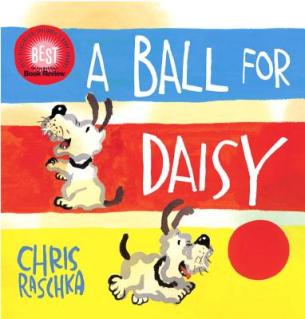
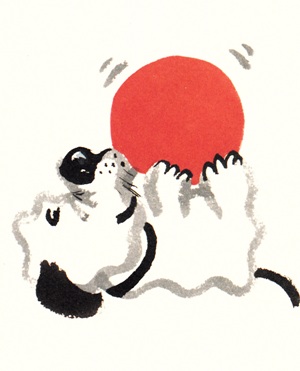
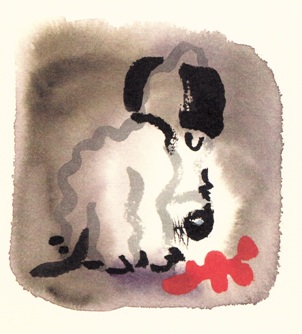
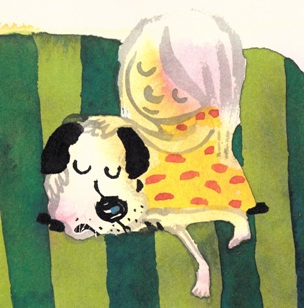
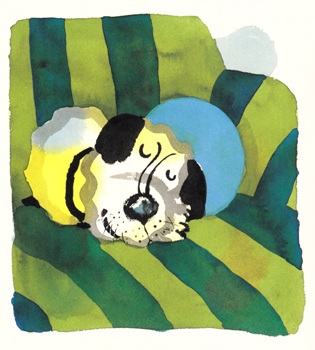
{ 1 comment… read it below or add one }
Another master of wordless picture books is David Wiesner. I particularly love his book Flotsam, which won the 2007 Caldecott Medal. We have read several of his books. They are all wordless and full of rich imagination and fantasy.
You must log in to post a comment.